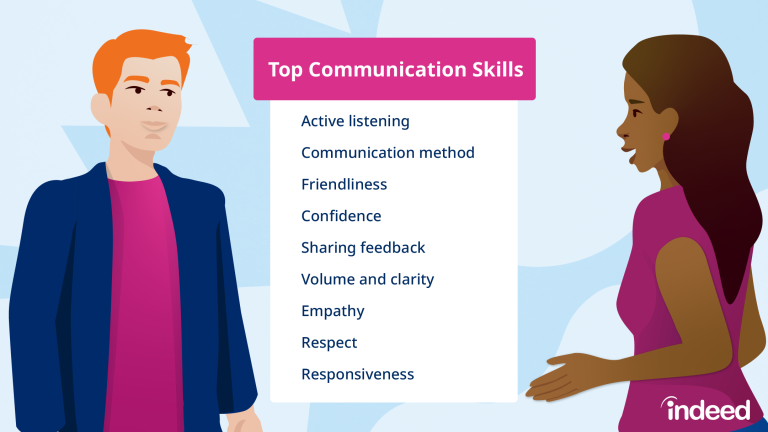Professional Development for Women
Professional development for women is crucial for their growth and advancement in their careers. By empowering women with the necessary skills, knowledge, and opportunities, they can thrive and achieve their full potential in the professional world.
In today’s rapidly evolving workplace, professional development is essential, especially for women who may face unique challenges and barriers. Investing in professional development allows women to enhance their skills, stay relevant, and compete on an equal footing with their male counterparts.
From networking events, mentorship programs, and leadership training, to workshops, conferences, and continuous learning opportunities, professional development for women offers a valuable platform to acquire new knowledge, develop career strategies, and build a strong professional network. It not only fosters personal growth but also helps women to gain confidence, improve their productivity, and unlock new career opportunities. Overall, professional development for women is critical to promoting gender equality, fostering diversity and inclusion, and enabling women to succeed in their chosen professions. It is an essential aspect of building a fair and thriving professional world.
Challenges Faced By Women In Professional Development
Professional development for women involves various challenges that can hinder their progress. These obstacles include gender bias, lack of opportunities, unequal pay, and limited access to senior leadership roles. Overcoming these challenges is crucial to empower women in their professional journeys and create a more inclusive and diverse workforce.
Women face unique challenges in their pursuit of professional development. From a lack of access to leadership opportunities to gender bias in the workplace and the struggle to balance work and family responsibilities, they navigate various hurdles on their career journey.
Let’s explore these challenges in detail:
Lack Of Access To Leadership Opportunities
- Women often encounter barriers to entry when it comes to obtaining leadership positions in various industries.
- They face a glass ceiling that limits their upward mobility within organizations.
- Companies tend to have a lower representation of women in senior management roles, resulting in limited role models and mentors for aspiring female leaders.
- This lack of access to leadership opportunities can hinder women’s career growth and development.
Gender Bias In The Workplace
- Gender bias remains a significant challenge for women in professional development.
- Women may encounter unequal treatment, such as disparities in salaries and promotions, compared to their male counterparts.
- Stereotypes and biases can limit women’s visibility, recognition, and opportunities for advancement.
- Unconscious biases can impact decision-making processes, resulting in women being overlooked for important projects or leadership roles.
Balancing Work And Family Responsibilities
- Women often juggle the dual responsibilities of their professional careers and family life, which can be challenging to balance.
- The expectation to fulfill traditional gender roles at home can place additional pressure on women, impacting their ability to focus on professional development.
- Work-life integration becomes crucial to ensure that women have the support and flexibility needed to excel in their careers while fulfilling family obligations.
- Organizations that provide family-friendly policies like flexible work hours and parental leave play a vital role in supporting women’s professional growth.
Women face several challenges in professional development, including a lack of access to leadership opportunities, gender bias in the workplace, and the struggle to balance work and family responsibilities. Addressing these challenges requires a collective effort from organizations, leaders, and society as a whole to create a more inclusive and supportive environment for women to thrive.

Credit: www.shrm.org
Strategies For Successful Professional Development For Women
Professional development strategies for women are crucial in today’s competitive workplace. By focusing on skills development, mentorship, networking, and empowerment, women can enhance their careers and achieve long-term success.
Building a strong professional network:
- Attending industry conferences and events can provide opportunities for networking and connecting with like-minded professionals in your field.
- Joining professional associations or organizations allows you to meet new people who can potentially become valuable contacts in your network.
- Actively participating in online communities, such as LinkedIn groups or industry forums, can also help you expand your network and stay updated on industry news and trends.
Seeking mentors and sponsors:
- Seeking a mentor who has already achieved success in your field can provide guidance, advice, and support as you navigate your professional development.
- A sponsor, on the other hand, is someone within your organization who can advocate for your advancement and help you secure opportunities for growth.
- Building relationships with mentors and sponsors can help you gain valuable insights, access to new opportunities, and valuable introductions to other professionals in your industry.
Developing leadership skills:
- Taking on leadership roles within your organization or community can help you develop and showcase your leadership skills.
- Seek out relevant training programs, workshops, or online courses to enhance your leadership abilities.
- Developing strong communication, decision-making, and problem-solving skills are all essential for effective leadership.
Remember, building a professional network, seeking mentors and sponsors, and developing leadership skills are strategies women can employ for successful professional development. By actively engaging in these activities, women can establish strong connections, gain valuable guidance and support, and ultimately excel in their careers.
Overcoming Imposter Syndrome In Professional Development
Overcome Imposter Syndrome in women’s professional development with practical strategies to boost confidence and embrace success in the workplace. Gain valuable insights and tips to navigate challenges and thrive in your career growth.
Recognizing And Challenging Self-Doubt:
- Imposter Syndrome, characterized by feelings of inadequacy despite evidence of competence, can hinder women’s professional development. It’s crucial to recognize and challenge these negative thoughts. Here’s how:
– Acknowledge Your Accomplishments:
- Take time to reflect on your achievements, big or small.
- Remind yourself of the skills, knowledge, and experience you possess.
- Keep a record of positive feedback and recognition received.
– Challenge Negative Self-Talk:
- Identify and challenge the negative thoughts that fuel imposter syndrome.
- Replace self-doubt with self-affirming statements such as “I am capable and deserving of success.”
- Focus on your strengths and previous successes to combat feelings of inadequacy.
– Embrace Growth And Learning:
- View setbacks and failures as opportunities for growth.
- Seek constructive feedback and learn from it.
- Understand that every professional journey involves challenges and learning curves.
Celebrating Achievements And Embracing Confidence:
- Recognizing and celebrating achievements can help boost confidence and combat imposter syndrome. Here are ways to embrace your accomplishments:
– Practice Self-Acknowledgment:
- Allow yourself to feel proud of your achievements.
- Celebrate milestones, both personal and professional.
- Share your successes with trusted friends, family, or colleagues.
– Build A Support Network:
- Surround yourself with positive and supportive individuals.
- Seek out mentors and role models who can provide guidance and encouragement.
- Collaborate with like-minded professionals to gain confidence through shared experiences.
– Visualize Success:
- Imagine yourself succeeding in your professional endeavors.
- Use visualization techniques to boost confidence and create a positive mindset.
- Visualize overcoming challenges and confidently taking on new opportunities.
Seeking Support And Encouragement From Peers:
- Seeking support and encouragement from peers can help combat imposter syndrome and foster professional growth. Here’s how to build a supportive network:
– Join Professional Communities:
- Engage in industry-specific groups and online communities.
- Participate in networking events, conferences, or workshops.
- Connect with individuals who share similar career goals and aspirations.
– Share Experiences And Seek Advice:
- Openly discuss challenges and insecurities with trusted peers.
- Seek advice and guidance from those who have faced similar obstacles.
- Gain insights and strategies from sharing and learning from others’ experiences.
– Provide Support To Others:
- Offer your expertise and support to fellow professionals.
- Mentor others and participate in mentoring programs.
- Contributing to others’ growth can boost your confidence and sense of belonging.
By recognizing and challenging self-doubt, celebrating achievements, and seeking support from peers, women can overcome imposter syndrome and thrive in their professional development journey. Embrace your capabilities, acknowledge your accomplishments, and find strength in a supportive network. Remember, you have the power to overcome any obstacles and achieve your goals.
Keep pushing forward!
Breaking Through The Glass Ceiling: Advancing Women In Leadership Positions
Breaking through the glass ceiling is vital for advancing women in leadership positions. This article explores professional development strategies to help women excel and thrive. Gain insights and actionable tips for achieving success in the competitive corporate world.
As women aim to break through the glass ceiling and secure leadership positions, addressing barriers to advancement, promoting diversity and inclusion, and creating a supportive workplace culture become vital factors. Let’s explore each of these aspects in detail:
Addressing Barriers To Advancement:
- Lack of mentorship opportunities: Many women face challenges in finding and securing mentors who can guide them in their professional journey.
- Gender bias and stereotypes: Women often encounter biases and stereotypes that hinder their advancement opportunities and limit their chances of securing leadership positions.
- Unequal access to resources and opportunities: Limited access to networks, training programs, and resources can impede women’s progress in their careers.
- Work-life balance challenges: Balancing professional responsibilities with household and caregiving duties can be a significant barrier for women’s professional growth.
Promoting Diversity And Inclusion:
- Implementing diversity initiatives: Organizations can establish diversity programs and policies to actively promote gender equality, inclusivity, and equal opportunities for women.
- Diverse hiring practices: Adopting inclusive hiring practices that consider diverse talent pools fosters an environment where women can thrive and advance.
- Equal pay and benefits: Pay transparency and fair compensation policies help bridge the gender pay gap and promote women’s advancement by recognizing their value and contributions.
- Providing leadership training: Equipping women with leadership skills through training and development programs can enable them to step into leadership roles with confidence.
Creating A Supportive Workplace Culture:
- Encouraging work-life balance: Implementing flexible work arrangements, family-friendly policies, and supportive leave policies can create an inclusive environment for women to excel.
- Empowering female employees: Providing opportunities for skill development, recognition, and career growth empowers women to expand their knowledge and expertise, increasing their chances of obtaining leadership positions.
- Breaking stereotypes: Challenging and changing societal norms and stereotypes surrounding women’s roles in leadership positions can foster an inclusive workplace culture.
- Allies and sponsors: Encouraging male colleagues and leaders to be allies and sponsors can help remove barriers and provide support for women in their professional journey.
By addressing barriers to advancement, promoting diversity and inclusion, and creating a supportive workplace culture, organizations can pave the way for women to shatter the glass ceiling and achieve success in leadership positions. It is crucial for companies to prioritize these efforts to cultivate an environment where women can thrive and contribute to their fullest potential.
Let us continue our commitment to advancing women in leadership positions and creating a more equitable and inclusive future.
The Role Of Continued Learning In Women’S Professional Development
Continued learning plays a crucial role in the professional development of women, empowering them to adapt to changing industries, enhance skills, and pursue leadership positions. By actively seeking opportunities for growth, women can overcome barriers and achieve success in their careers.
Continued learning plays a crucial role in the professional development of women, enabling them to stay ahead in their careers and succeed in today’s rapidly evolving work environment. Whether it’s pursuing higher education and certifications, engaging in ongoing skill development, or staying updated with industry trends and technologies, the commitment to continuous learning can open doors to new opportunities and empower women to achieve their professional goals.
Let’s explore each of these aspects in more detail:
Pursuing Higher Education And Certifications:
- Obtaining a higher education degree or certification demonstrates a commitment to excellence and can enhance the credibility of women professionals.
- Advanced degrees such as master’s or doctoral programs provide specialized knowledge and expertise in a specific field, positioning women as subject matter experts.
- Certifications and professional designations validate skills and competencies, distinguishing women professionals and boosting their professional reputation.
Engaging In Ongoing Skill Development:
- Actively participating in workshops, webinars, and conferences allows women professionals to expand their skill sets and acquire new knowledge.
- Skill development programs provide opportunities to learn new techniques, enhance problem-solving abilities, and develop leadership qualities.
- Continuous skill development ensures women are equipped with the latest tools and strategies, leading to increased confidence and the ability to take on new challenges.
Staying Updated With Industry Trends And Technologies:
- Keeping up with industry trends and emerging technologies is essential for women professionals to remain competitive in their fields.
- By staying updated, women can anticipate market demands, adapt to changes, and spot potential opportunities for growth.
- Regularly following industry publications, joining professional networks, and participating in online forums ensure women professionals are well-informed and connected within their industries.
Continued learning is a vital component of women’s professional development. By pursuing higher education and certifications, engaging in ongoing skill development, and staying updated with industry trends and technologies, women can position themselves for success, overcome barriers, and break through glass ceilings.
Embracing lifelong learning will equip women with the tools, knowledge, and confidence necessary to thrive in their chosen career paths.
Tools And Resources For Women’S Professional Development
Discover a wide range of valuable tools and resources to support women’s professional development. From mentorship programs to online courses, empower yourself with the right resources for success.
Whether you are just starting your career or looking to advance to the next level, there are numerous tools and resources available to support your professional development as a woman. From online courses and webinars to professional organizations and conferences, as well as networking events and workshops, these resources can provide you with valuable knowledge, skills, and connections to help you thrive in your career.
Online Courses And Webinars
- Online courses and webinars offer the flexibility to learn at your own pace and convenience. They provide access to a wide range of topics and subjects relevant to professional development for women.
- Some trusted platforms offer courses specifically tailored to women’s needs and challenges in the workplace, covering areas such as leadership, negotiation skills, and work-life balance.
- By enrolling in these courses and webinars, you can gain new knowledge, expand your skillset, and stay up-to-date with industry trends, all from the comfort of your own home.
Professional Organizations And Conferences
- Professional organizations focused on women’s professional development provide a supportive community and opportunities for networking and mentorship.
- These organizations often organize conferences, seminars, and workshops where you can learn from industry experts, share experiences with like-minded professionals, and build valuable connections.
- Being part of a professional organization allows you to tap into a network of resources, access job boards, and stay informed about the latest developments in your field.
Networking Events And Workshops
- Networking events specifically designed for women provide a platform to connect and collaborate with other professionals in your industry.
- Attending these events allows you to expand your professional network, exchange ideas, and explore potential career opportunities.
- Workshops focused on women’s professional development offer practical skills and tools to enhance your leadership abilities, improve communication, and navigate workplace challenges effectively.
Investing in your professional development as a woman is essential for career growth and success. With these tools and resources at your disposal, you can broaden your horizons, acquire new skills, and build a strong support network that will empower you on your professional journey.
Achieving Work-Life Balance In Professional Development
Find balance in professional development by prioritizing work-life balance for women. Embrace strategies to manage both personal and professional responsibilities, fostering growth and success in the workplace. Optimize your overall well-being while achieving career goals.
It’s no secret that achieving work-life balance can be a challenge, especially for women who are pursuing professional development. The demands of career growth and personal responsibilities can sometimes feel overwhelming. However, by setting boundaries and prioritizing self-care, seeking flexible work arrangements, and leveraging technology for remote work and productivity, women can strike a healthy balance between their professional and personal lives.
Setting Boundaries And Prioritizing Self-Care:
- Establish clear boundaries between work and personal life to ensure that personal time is protected.
- Delegate tasks or ask for help when needed to avoid becoming overwhelmed.
- Make time for self-care activities, such as exercise, hobbies, and relaxation.
- Prioritize sleep and ensure there is enough rest to maintain overall well-being.
Seeking Flexible Work Arrangements:
- Explore the possibility of flexible work schedules, such as working part-time or adjusting working hours to accommodate personal obligations.
- Communicate openly with employers or supervisors about the need for flexibility and present a well-thought-out plan that shows how it can benefit both parties.
- Consider remote work options or job-sharing arrangements that allow for greater control over work-life balance.
Leveraging Technology For Remote Work And Productivity:
- Utilize communication and collaboration tools, such as video conferencing and project management software, to stay connected and productive while working remotely.
- Set up a designated workspace at home that is separate from personal areas, ensuring a clear distinction between work and personal life.
- Take advantage of time-saving applications and tools to streamline work processes and maximize efficiency.
- Embrace digital communication channels for networking and professional development opportunities.
With the right strategies in place, women can achieve a healthy work-life balance while pursuing professional development. By setting boundaries, prioritizing self-care, seeking flexible work arrangements, and leveraging technology, it is possible to thrive both personally and professionally. Remember, finding balance is a continuous journey, and it’s essential to adjust and adapt as circumstances change.
Empowering The Next Generation: Investing In The Professional Development Of Girls
Investing in the professional development of girls is crucial for empowering the next generation. Providing women with opportunities for growth and skill-building fosters their success in the professional world. By prioritizing professional development for women, we can create a more equitable and inclusive society.
Girls hold immense potential, yet they often face various challenges in their professional development. By investing in the growth and empowerment of young girls, we can create a more inclusive and diverse workforce for the future. Here are some key ways to foster the professional development of girls:
Providing Mentorship And Guidance:
- Encouraging experienced professionals to mentor young girls can have a lasting impact on their professional development.
- Mentorship provides guidance, support, and valuable insights, helping girls navigate through their careers.
- Through mentorship, girls can gain confidence, build networks, and learn crucial skills necessary for success in any field.
Encouraging Girls To Pursue Stem And Non-Traditional Fields:
- Inspiring girls to pursue STEM (Science, Technology, Engineering, and Mathematics) fields can help bridge the gender gap in these industries.
- Providing access to STEM education and resources at an early age can ignite their interest and passion.
- Encouraging girls to explore non-traditional careers and fields can open up new opportunities and challenge gender stereotypes.
Breaking Gender Stereotypes And Biases:
- Breaking down gender stereotypes and biases is essential for creating an inclusive and equitable professional environment.
- Encouraging girls to defy societal expectations and pursue their passions can empower them to thrive in their careers.
- Promoting diverse role models and showcasing successful women in various industries can inspire girls to dream big and reach their full potential.
Investing in the professional development of girls is not only crucial for their individual growth but also for the progress of society as a whole. Empowered girls become confident women who contribute to innovative ideas, leadership positions, and a more balanced workforce.
Let us join hands in nurturing the next generation of strong, successful, and empowered female professionals.
Frequently Asked Questions On Professional Development For Women
What Is The Emerging Leaders Program For Women?
The emerging leaders program for women is a leadership development initiative focused on empowering and equipping women to become influential leaders in their fields.
What Are The Topics For Women In Leadership Program?
The topics for women in leadership programs include communication skills, strategic thinking, self-confidence building, and effective decision-making.
What Is The Harvard Emerging Leader Program For Women?
The Harvard Emerging Leader Program for women is a leadership development program aimed at empowering women to excel in their careers.
Do Women Leadership Programs Work?
Yes, women leadership programs are effective in promoting the growth and success of female leaders.
Conclusion
Professional development for women is a crucial aspect for their personal and career growth. By actively seeking opportunities to enhance their skills, women can break through barriers and excel in their chosen fields. It is important for women to find mentors who can guide them and provide valuable insights.
They should also consider attending conferences and workshops that focus on their areas of interest. Investing in continuous learning and staying updated on industry trends will give women a competitive edge in the job market. Furthermore, networking with like-minded individuals and joining professional associations can open doors to new opportunities and partnerships.
By embracing professional development, women can overcome challenges, shatter glass ceilings, and pave the way for future generations of empowered and successful individuals. Together, we can create a more inclusive and equal society.



